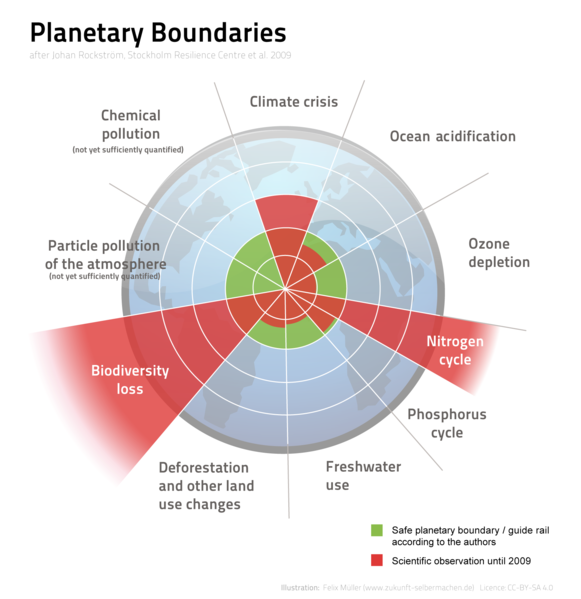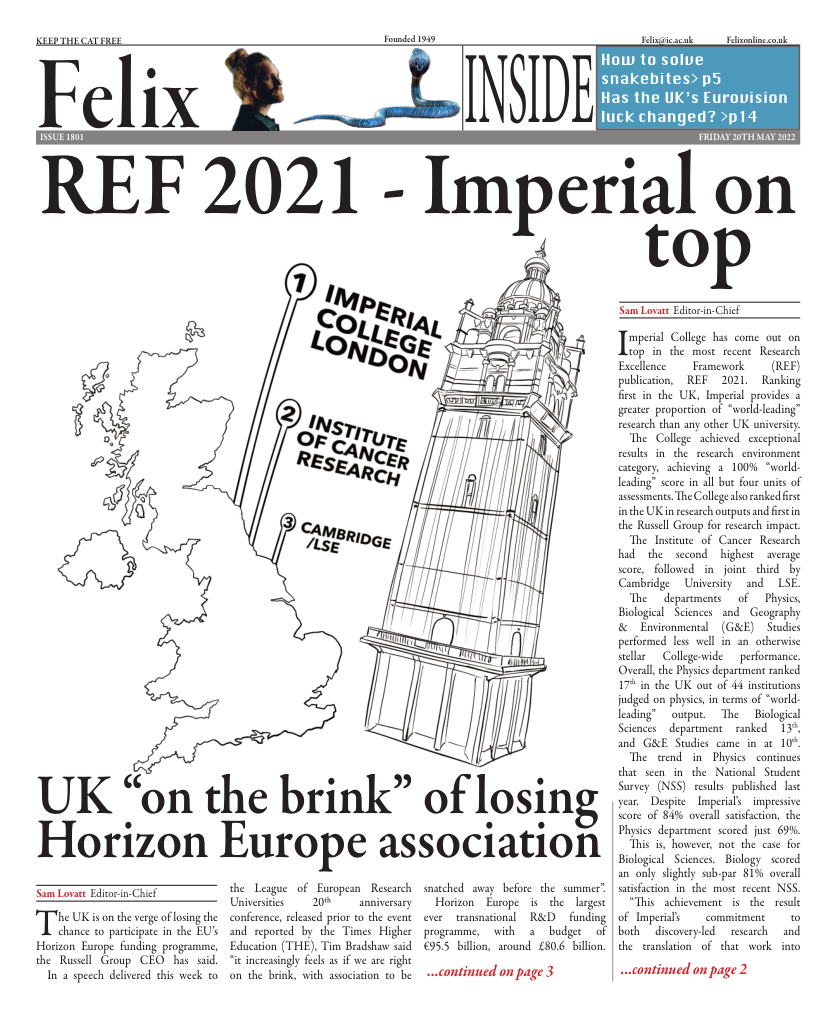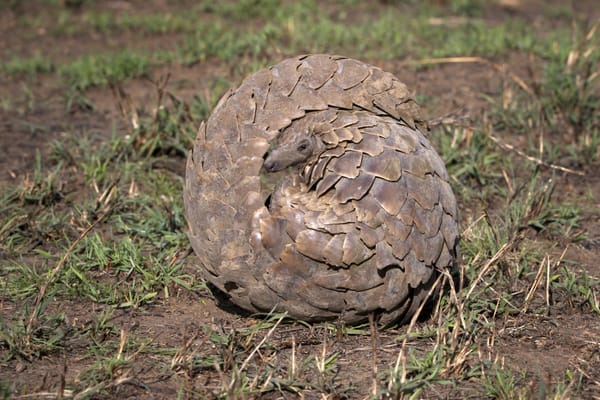Explaining the nine planetary boundaries
A run down of how scientists can quantify the state of the world

With the recent quantification of ‘novel entities’, one of the nine planetary boundaries, you may be thinking: what are these planetary boundaries, what do they mean, and how do they relate to climate change and environmental issues? Well, if you were wondering (and even if you weren’t), here is a brief rundown of the boundaries and why they are significant for our future.
The ‘planetary boundaries’ were defined and developed in 2009 by Swedish scientist Johan Rockström and a group of researchers at the Stockholm Resilience Centre to describe a set of quantifiable categories for Earth’s ecological systems and processes. Each category details how humanity is impacting the health of the planet and helps us direct our focus toward the areas that need it most. The boundaries are quantified with respect to a ‘safe operating space’, within which we can maintain the conditions of the Holocene (our current climate era).
1. Climate Change – core
Climate change is a term most of us know all too well. While it seems the term ‘climate change’ (or ‘climate crisis’) is becoming synonymous with the idea of a potential apocalyptic future, it is important to distinguish it as an individual environmental issue among many. It is, however, defined as a ‘core’ category, as it tends to create knock-on effects for the other boundaries.
Climate change refers specifically to changes in seasonal weather patterns for different areas of the Earth. Deviation of a country’s climate from how it should be at a given time of year negatively affects its ecosystems.
A quintessential example is the later freezing and earlier melting of polar ice caps in winter. This is caused by the warming of the Arctic circle’s climate and results in habitat loss for polar bears (among other creatures), for whom the ice caps are a winter home. The impact of a decrease in polar bears reverberates throughout the ecosystem, with more seals (a bear delicacy), resulting in lower levels of fish in the sea.
Climate change is quantified by average surface temperature measurements over different parts of the planet (degree of relative warming).
2. Change in Biosphere Integrity – core
Biosphere integrity refers to the balance between living creatures and resources on the planet, and the maintenance of biodiversity. Previously named ‘biodiversity loss’, this boundary quantifies the extinction and endangerment of animal and plant species due to human activity and environmental changes. This is also a core category, as biodiversity is a key factor in maintaining the health and natural balance of ecosystems.
- Extinctions per Million Species per Year (E/MSY)
A relatively easily quantifiable value, the baseline rate has generally been estimated as 1 E/MSY (without human intervention). By comparison, the current rate is estimated to be 100-1000 E/MSY at best, which has brought about discussions of us being part of the ‘sixth mass extinction event’. Extinction events occur when the extinction rate significantly exceeds the baseline, such as at the end of the Cretaceous period (when dinosaurs were wiped out).
- Biodiversity Intactness Index (BII) – not fully quantified
Similar (but not identical) to the extinction rate, the BII measures how well a given area’s biodiversity has been maintained. For an ecosystem to be well-functioning and resilient, it should have a BII of over 90%, while the BII of an at-risk ecosystem would be under 30%. As it stands, global BII values range from around 30% to 90% (by country). The UK is in the lowest 15% of countries, with a BII of ~50%.
3. Land-System Change
In the land-system change boundary, a ‘land-system’ is any area of land that contributes to an ecosystem. A major example of a land-system change is the conversion of natural forests, wetlands, etc., into arable land for farming. The deforestation involved in this process results in decreased biodiversity and decreased natural carbon capture. Land-system changes also have implications for food security, as there is less variation in food sources for wildlife, and genetically similar crops are also more likely to succumb to diseases. This change is quantified by the percentage of wildland transformed into land for farming or other human activities.
4. Freshwater Use
We have known for a long time that freshwater is a scarce and limited resource – only 3% of the world’s water is fresh and drinkable, and 2.5% of that is trapped in ice, soil, and the atmosphere. We generally have water-treatment systems for well-connected cities and suburban areas, but many underdeveloped countries still do not. The populations of such countries are – or are in danger of – being subjected to freshwater shortages. Not only is our own society heavily reliant on the resource of fresh water, but so are millions of species of wildlife. The safe operating boundary for freshwater use has been set to 4000 km3/year, and we currently use about half of that value, although demand is significantly higher, and around 70% of the freshwater used is for agriculture alone.
5. Biogeochemical Flows
In layman’s terms, with respect to soil and plant health, biogeochemical flows are the movement of the essential elements nitrogen and phosphorus, vital for healthy plant growth. The carbon cycle is also a biogeochemical flow system – one which has been altered significantly by increases in carbon emissions - but this is not quantified as part of this category.
- Nitrogen Cycle
Nitrogen travels through the biosphere through absorption by plants such as algae, which are then eaten by animals (e.g. fish), trapped in their waste, and then released back into the system (soil or water) through decomposition. The artificial addition of excess nitrogen into the environment through fossil fuels and fertilisers is disruptive to the natural cycles of nitrogen. Nitrates can feed algae to the point that they choke other wildlife of oxygen in water systems (eutrophication), while nitrous oxides contribute to pollution and ozone depletion. Human activity contributes to more nitrogen processing than all-natural cycles combined, creating huge excesses of reactive nitrogen and nitrogen-based compounds.
- Phosphorus Cycle
Phosphorus is cycled similarly to nitrogen but without any of its compounds being released into the atmosphere. Again, artificial introductions of phosphorus and phosphates in fertilisers can disrupt the balance of the phosphorus cycle, causing water pollution and excessive algal growth. Phosphorus and phosphate production by humans is only slightly lower than that of nitrogen.
6. Ocean Acidification
The acidification of oceans is a topic related to climate change, as it too results from greenhouse gas emissions – specifically carbon dioxide. As carbon dioxide dissolves into seas and oceans, it forms carbonic acid, which lowers the pH of the water and has damaging effects on sea life. Increased acidity also amplifies the impact of global warming, an example being the bleaching of coral. Acidic waters weaken coral growth, making it even more difficult to resist and survive the bleaching caused by increasing temperatures. Other man-made compounds (such as nitrates, phosphates, and sulphur dioxide) can also contribute to this acidification. Ocean acidification can be measured by aragonite saturation (a measure of carbonate ion concentration); decreased saturation damages and destroys aragonite-based structures such as shells and coral. Pre-industrial aragonite saturation was 3.44, while the current value is ~2.9, and the safe operating boundary is 2.75.
7. Atmospheric Aerosol Loading – not fully quantified
Atmospheric aerosols are microscopic particulates that escape from Earth’s surface into its atmosphere. These can create both air and water pollution and affect the water and weather cycles, influencing climate change, biodiversity, and global warming. Aerosols are generally defined as PM2.5 (less than 2.5 μm in diameter). Primary aerosols such as soot and sea salt are picked up naturally from the Earth’s surface. In contrast, secondary aerosols are formed by physical or chemical reactions, creating particles such as organic compounds, greenhouse gases, or acidic liquid droplets. Atmospheric aerosols affect heat and light transmission, cloud formation, and other climate phenomena and impact the health of living organisms. However, due to the complicated nature of aerosol interactions and behaviour, the loading and boundary for these particles are yet to be quantified.
8. Introduction of Novel Entities (Chemical Pollution) – recently quantified
Chemical pollution is relatively self-explanatory, with ‘novel entities’ defined as potentially toxic and long-lasting substances that are introduced to ecosystems. Examples of novel entities include heavy metals such as lead and mercury, chemicals such as pesticides and detergents, radioactive materials, and microplastics. Invasive species can also be considered ‘novel entities’, as they can have an extended and harmful impact on their new environments. A new scientific paper has defined the boundary for novel entities as ‘when annual production and release increases at a pace that outstrips global capacity for assessment and monitoring’. They also concluded that this is the case, and we are already operating outside the safe space for novel entities.
9. Stratospheric Ozone Depletion
The ozone layer is a vital entity in the stratosphere that filters out harmful UV radiation from sunlight on its way to Earth. Ozone-depleting substances can destroy this protective layer, creating a clear path in the atmosphere for UV rays to pass through. Severe UV radiation can cause scorching of the Earth’s surface, affecting both land and sea ecosystems, as well as causing skin cancers.
Fortunately, the Montreal Protocol, which regulates emissions of ozone-depleting substances (see Issue 1798’s Science section), has been successful in allowing the ozone layer to repair itself – a huge win for environmental policy!
The planetary boundaries are important for shaping and directing human activity going forward, and defining the current degree of severity for each category can inform the issues that policymakers and governing bodies focus on. Despite their distinct categorisation, there is no denying the interconnectedness of each area, centring around the cores of climate change and biosphere integrity. Adapting our behaviour to improve one category will inevitably have a positive impact on some of the others.









